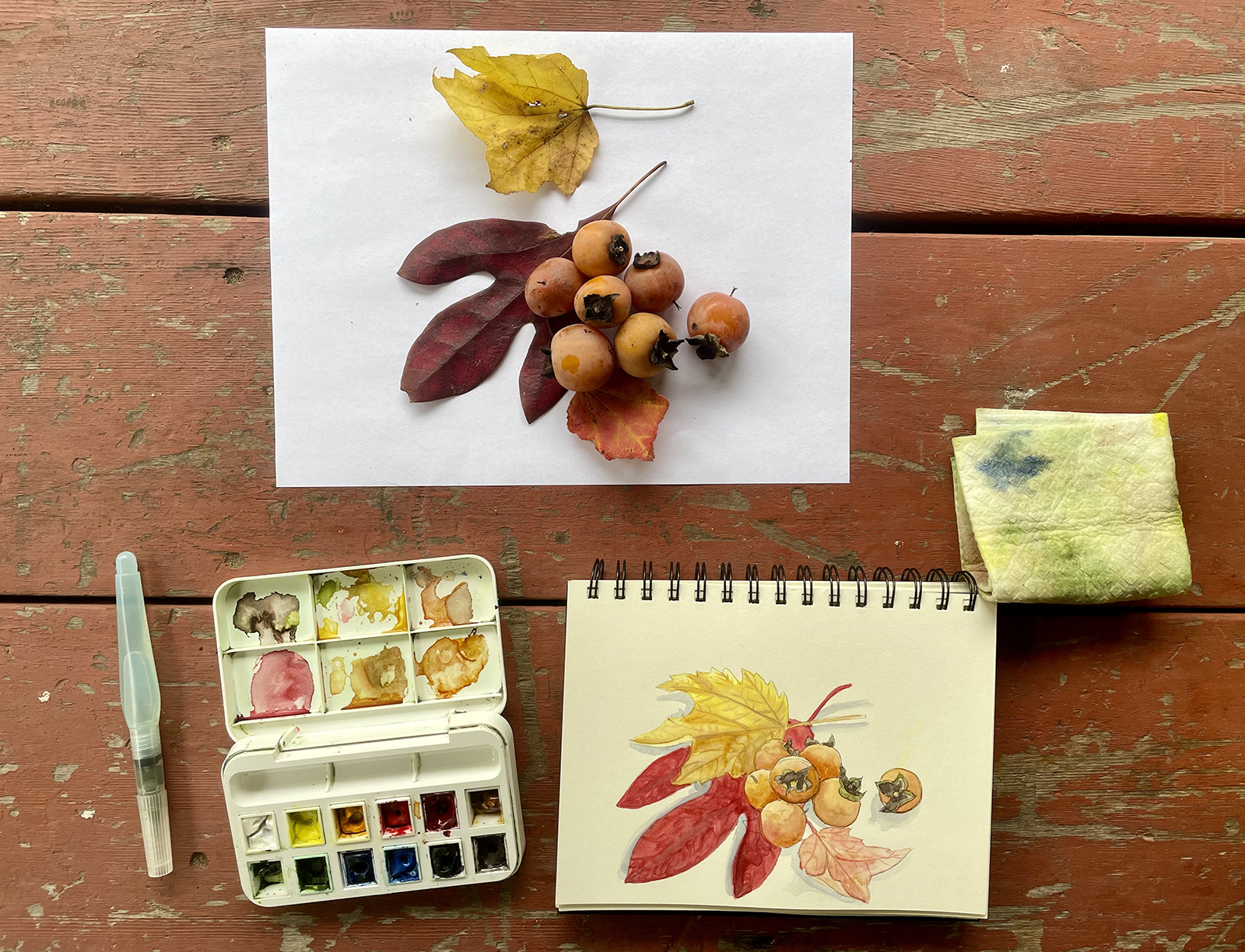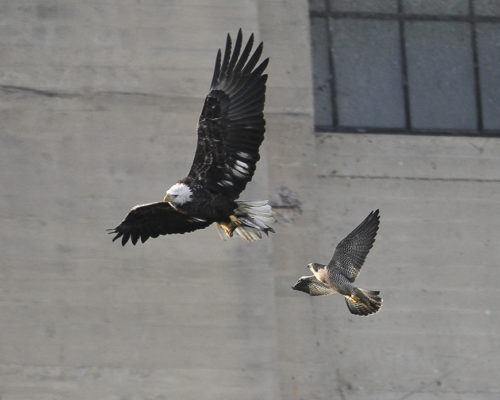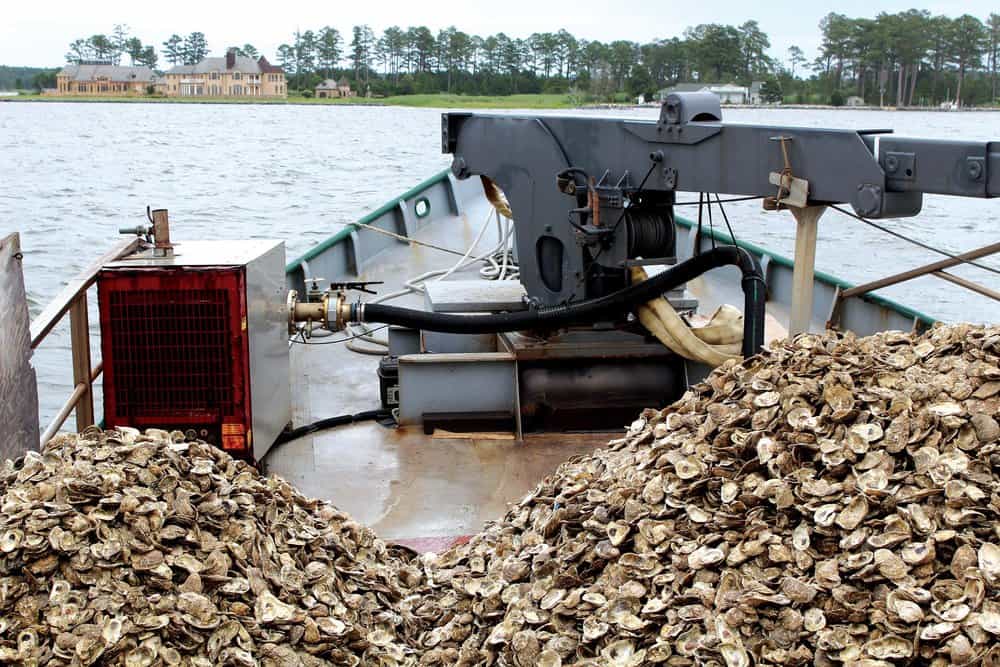The Joy of Chesapeake Nature Journaling
There’s just one road that crosses Eastern Neck Island off the southern tip of Kent County, Md. A ribbon of pavement through the marsh, it’s barely above the high tide line and sometimes not even that. I’ve driven the road a thousand times, in every season. I might follow it to the old, overgrown Bayside homesite where the bulbs still bloom every spring, or to the path that leads to my favorite oyster shell beach.
But as l rough it out in my sketchbook, fresh details emerge. I draw the tilting osprey pole, the reflection of clouds on the water. In the marsh, I wash the page with watercolor, and the salt meadow hay bleaches from summer green to fall gold. In my mind’s eye, I can see the turtles I’ve helped along as they crossed the pavement, hear the fluting call of tundra swans where the road cuts close to a protected cove.
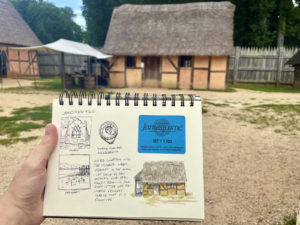
I would not call myself an artist—I’m a writer—but the piles of sketchbooks I’ve filled with scenes like this beg to differ. In them, I’ve documented the water and landscapes of the Chesapeake for years. Seasons, locations, history, tides, plants and animals all get their space in the pages. Nature journaling lets me pin my experiences to paper like moths. In them, I can hold down a sliver of time and beauty that would have passed out of memory or languished in iPhone photo purgatory.
To me, nature journaling is a practice, like yoga or piano. You start off with childish placeholders for things—a lollipop tree, a rectangle house. With practice, you see past the symbols and start to truly observe and reflect what is really there. You notice and sketch distinctions: the smooth gray bark of a beech next to the elegant whiteness of a sycamore, for example.
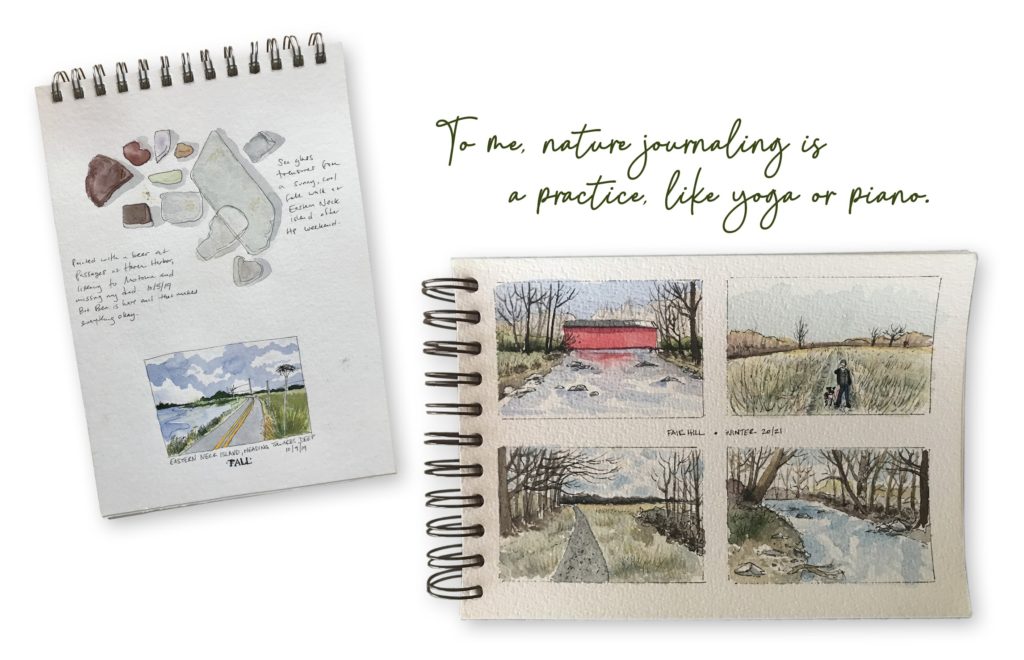
As you strengthen your journaling skills, your ability to draw what you see grows. Time slows too, as you build focus. With a sketchbook on my lap, the minutes and hours lengthen, and scenes or little details otherwise overlooked sharpen into vivid relief: crickets in the weeds or an owl’s silhouette on a ridge at dusk. The more I fill each sketchbook, the better and stronger my work becomes. In turn, I become more observant and appreciative of the world around me. Not only is each sketchbook a diary of my trips around the Chesapeake, it also documents my evolving skills and confidence.
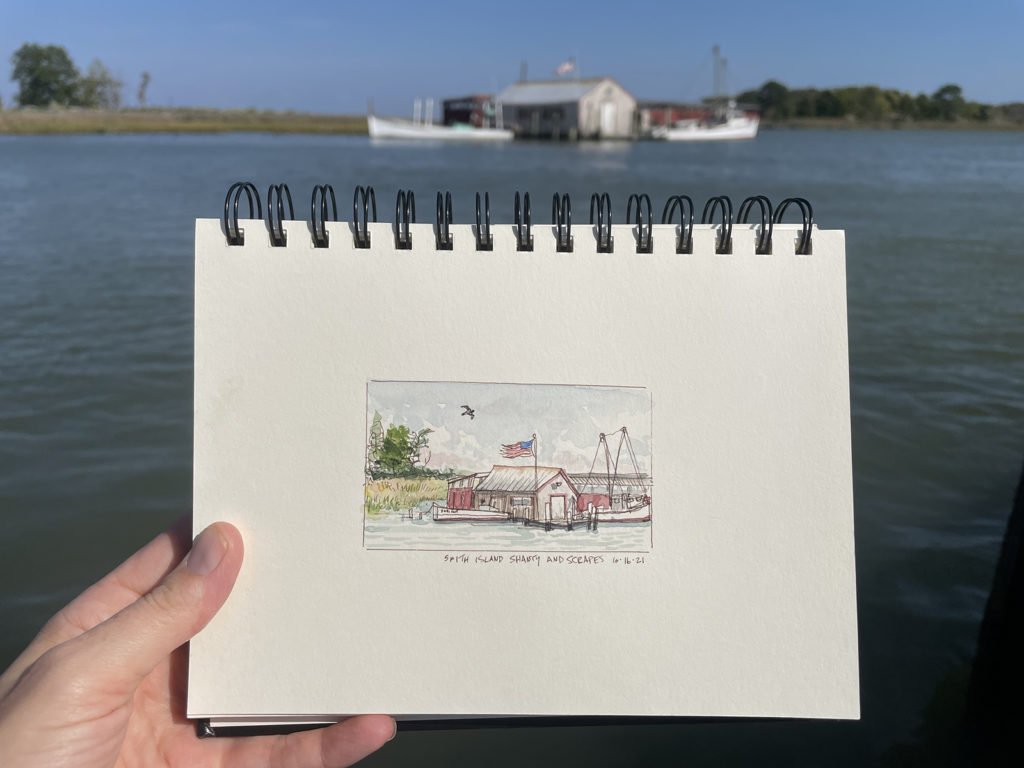
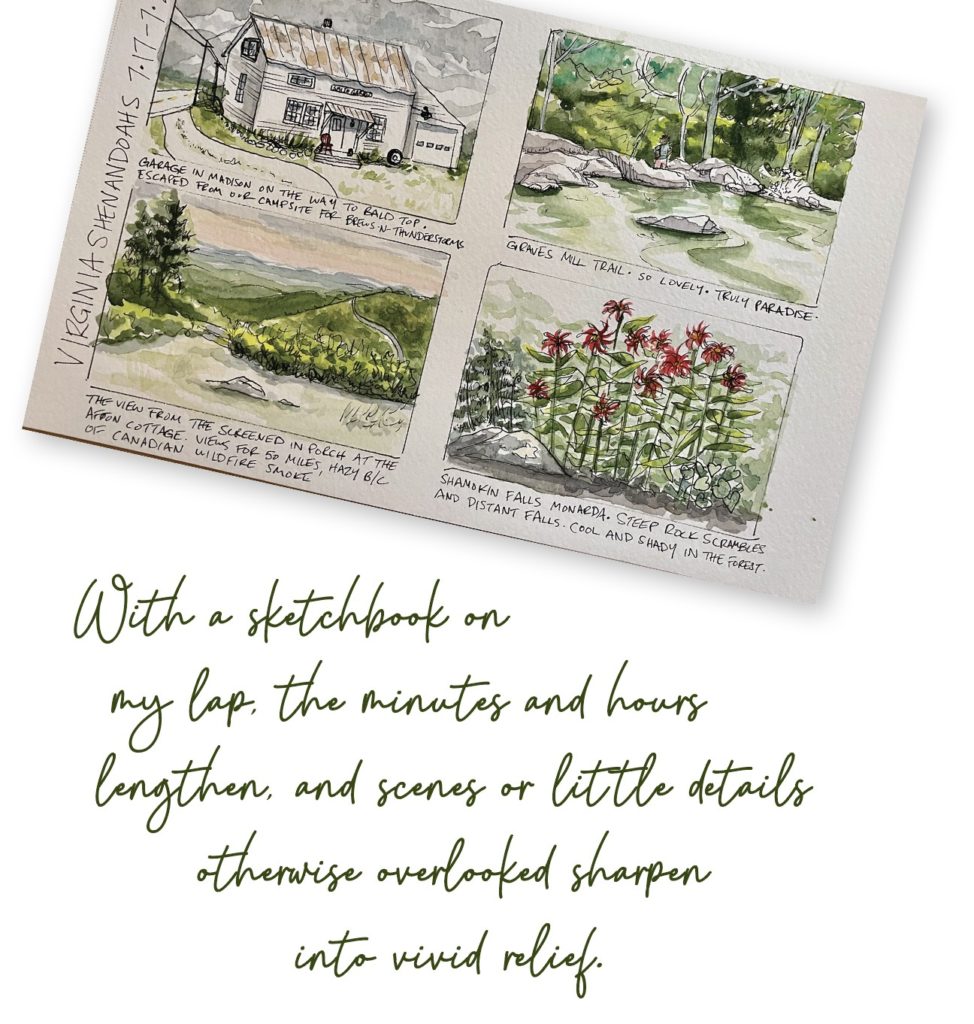
Journaling has revived a joyful part of myself I left behind a long time ago. I always liked to paint and draw as a kid and teenager, but stopped creating anything after grade school. In my mind, art was for artists—and if I wasn’t “good enough” to support myself as a professional, what was the point? But there’s been a change in my perspective as I’ve gotten older. I’ve come back to drawing and sketching just for the pleasure of it. If anything, there’s something marvelous about rediscovering a creative outlet that isn’t some revenue stream. There will never be an exhibit of my little sketches, and I never have to worry if what I make is what will sell. The enjoyment of an afternoon spent capturing the reflection of the covered bridge over Little Elk Creek is just for me.
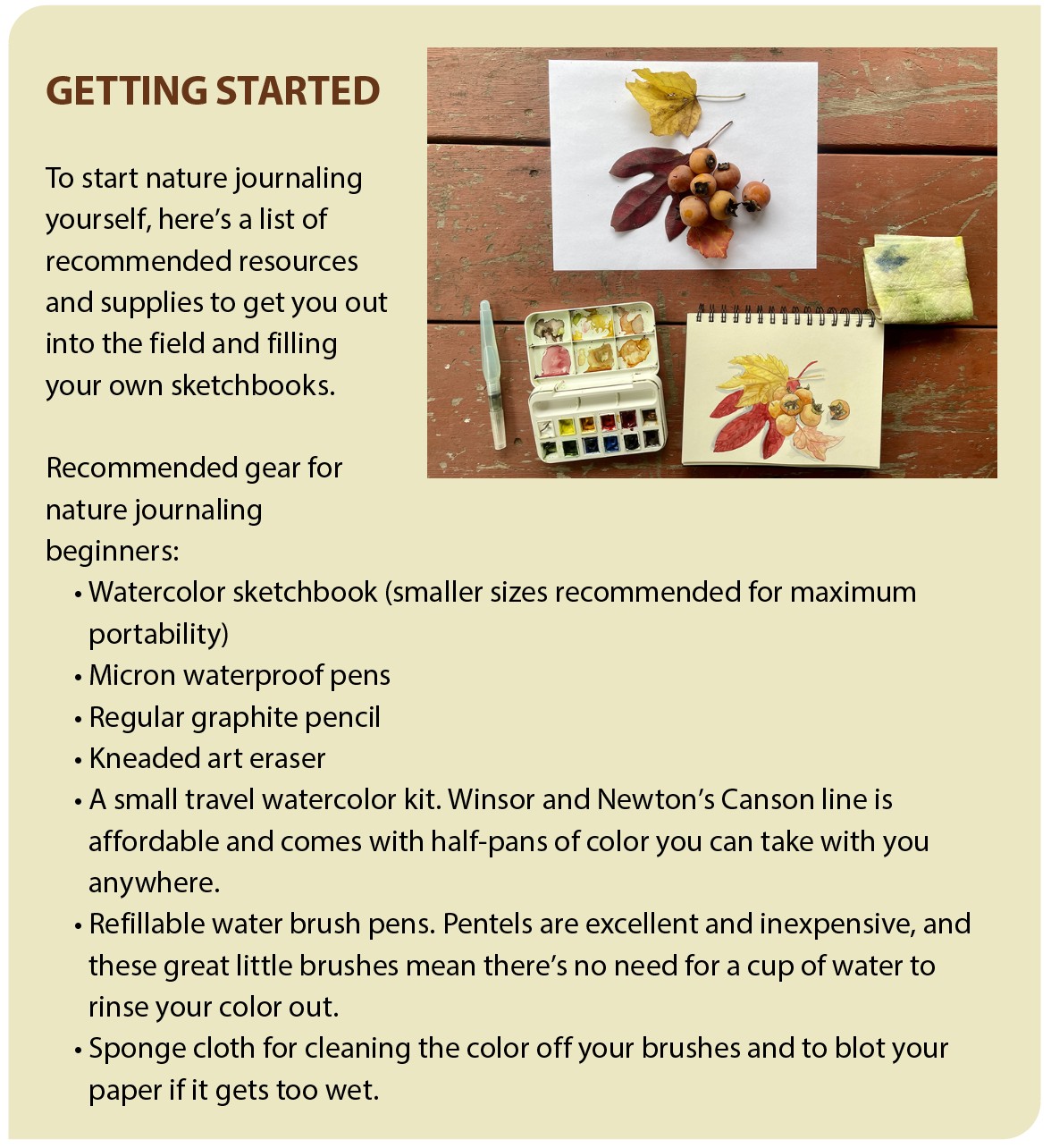
The beauty of this hobby is that it’s a low-stakes endeavor (read: cheap and convenient) that fits neatly into the rest of my life. Kitted out with a little sling backpack filled with a small sketchbook, pens, and a travel watercolor kit, I set off to my regular haunts. Whether it’s trails at Fair Hill, Sassafras, or Eastern Neck Island, oyster midden beaches, historic Chesapeake sites like Jamestown or Mount Vernon, or Smith Island’s crab shanties, I find inspiration from the places I’d go anyway. Sometimes I’ll sketch en plein air, right there on site where the mood strikes me. Or I’ll snap a reference photo to work from at home, revisiting a place in my mind days or weeks later.
I lay down the lines first, then chase it with color. It doesn’t have to be perfect—if anything, working in ink means you have to view your mistakes as opportunities. It also doesn’t need to be terribly faithful to the drawing’s inspiration. What’s important is the process. What did you see, hear, experience? What’s new in the world around you? What was the light like, or the weather? Maybe you add a drawing of the beach glass you found, or develop a new composition of words and images that emphasizes color, value or story. But most importantly, enjoy yourself. Lose track of time. Experiment. Get drawn back into the natural world around you.
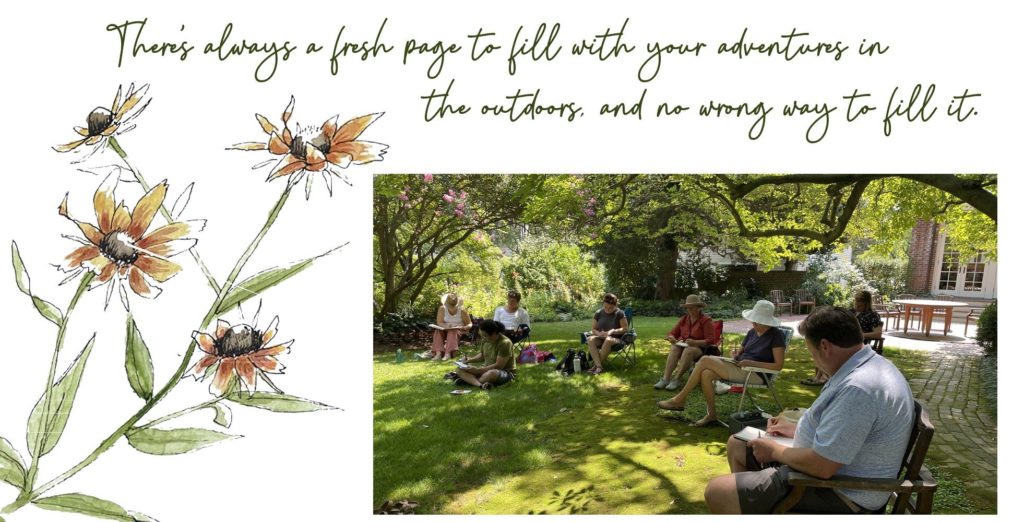
One of the best parts of nature journaling is sharing the joyful practice with others. I’ve taught nature journaling workshops to grade school classes and college students, adults who hadn’t touched a sketchbook in decades, and to teachers who want to use the techniques with their students. Most of the people in my classes love spending time outdoors and want to enhance their hikes or adventures.
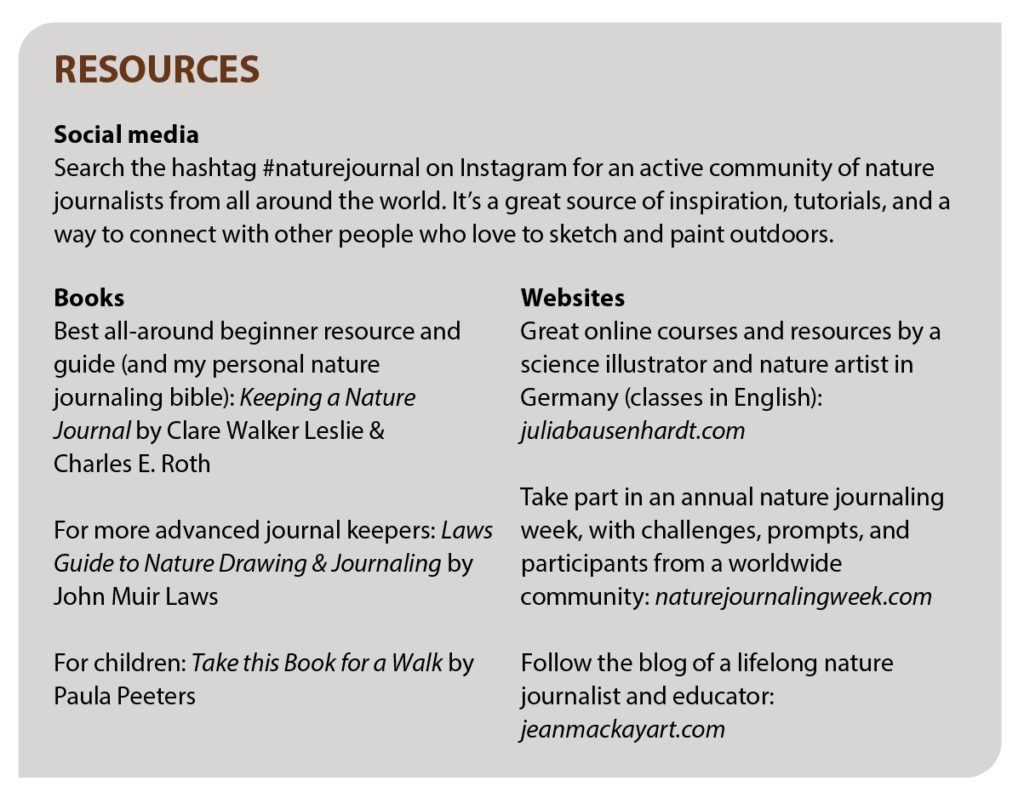
But almost universally, everyone in my journaling workshops believe they are “bad” at art. Breaking through this mindset is tough. It’s established early, usually after an attempt to faithfully recreate a scene or object goes pear-shaped. This is where the concept of drawing as a practice comes in handy. Nobody starts out their first day on a bike as Lance Armstrong, or their first session on a guitar as Jimi Hendrix. View sketching as a skill to learn, not just an innate talent, and find satisfaction in improving over time. Most importantly, keep trying just for the fun of it. There’s always a fresh page to fill with your adventures in the outdoors, and no wrong way to fill it.
I’ve taken my sketchbooks around the world, from the cenotes of Mexico to the Hausmann-designed boulevards of Paris. But without a doubt, my favorite place to draw is here, at home on the Chesapeake. With every turn of the tide or change of the season, down a river’s branch or a new trail, there’s something fresh to see and sketch. And each image is a little thank you note of appreciation for this beautiful place. I’m already itching for pens and watercolors for the pages of sketchbooks I’ll start in the decades to come, all of them full of celebration and gratitude.

